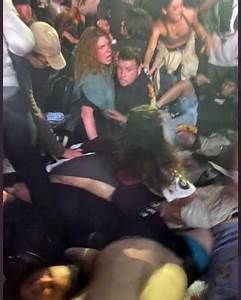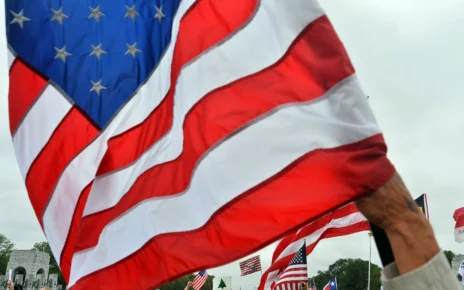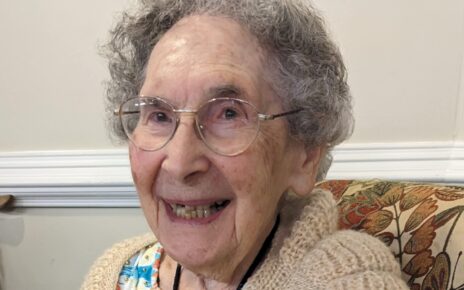Astroworld Disaster, a Reckoning for Music Festivals
When the music started, the crowd of 50,000-plus festivalgoers surged forward. Those in front of the stage found themselves pinned against metal barriers, unable to raise their arms or even draw breath. As the crowd packed ever tighter, a few people slipped, fell, and were trampled. Others died standing up, suffocating to death as the music continued to play. By the time anyone realized what had happened, nearly ten people were dead and dozens more injured. It was June 30, 2000, and the scene was a Pearl Jam concert at Denmark’s annual Roskilde Festival, one of the largest music events in Europe.
The parallels to Friday’s deadly Travis Scott concert in Houston, on the first night of the Live Nation–organized Astroworld festival, are uncanny. After both events, concertgoers were initially blamed—for using drugs, for mobbing the stage, for failing to help each other—even as experts in crowd science pointed their fingers at poor event planning. The performers came in for their share of criticism: Pearl Jam and Travis Scott are both known for high-energy shows that frequently include crowd-surfing and stage diving.
The Roskilde tragedy, in which nine concertgoers died, prompted a comprehensive rethinking of festival security throughout Europe. In consultation with crowd-safety experts, festival organizers created a set of best practices that have made European music festivals among the safest and best-organized in the world. Mass-casualty events have still occurred—21 people died in a crowd-crush incident at the 2010 Love Parade festival in Duisburg, Germany—but experts say that European festivals are now the international gold standard.
The Astroworld disaster may prompt a similar reckoning for the American festival industry, which, before the pandemic, attracted an estimated 32 million people a year. Although there have been deadly accidents before, most famously the Who’s 1979 concert in Cincinnati, at which eleven people died, the social media frenzy over Astroworld seems likely to force festival organizers to implement stricter crowd management measures. (Live Nation did not immediately respond to a set of questions about safety precautions at Astroworld.)
“This was a preventable tragedy,” said Paul Wertheimer, an American crowd-safety consultant who has been studying concerts for more than forty years. Wertheimer got his start in the industry when he was appointed to serve on the task force that investigated the Cincinnati disaster. “It was preventable because there are techniques that are known to prevent crowd crushing, crowd surging, and crowd collapse—the kind of chaos that occurs in front of the stage.”
Among the biggest questions about the Astroworld disaster is why the concert went on for 37 minutes after Houston authorities declared a “mass casualty” event. (At Roskilde in 2000, Pearl Jam ended the concert early after noticing the fallen concertgoers.) Scott briefly stopped the show at several points, apparently in response to seeing emergency workers attending to concertgoers, but ultimately completed his set. Over the weekend, he released a video statement saying that he “could just never have imagined the severity of the situation.” At a news conference on Saturday, Houston police chief Troy Finner said he worried that stopping the show would set off a riot among the 50,000-plus attendees.
The crowd-safety experts who spoke to Texas Monthly were baffled by why no one pulled the plug. Vendelø said it is standard practice in Europe for festival organizers to monitor CCTV video of the crowd to look for medical incidents or unruly behavior. The organizers should have had the power to pause or end the show after seeing dozens of people treated for heart attacks and asphyxiation. “I don’t think it can be the artist’s responsibility,” Vendelø said. “They often have a lot of light in their eyes, so if you’re playing in the dark you really can’t see anything.”
The fact that Scott paused the show at several points—in one case mentioning the ambulance making its way through the crowd—might seem to indicate that Scott knew enough to stop the concert for good. Instead, the Houston rapper continued to amp up the energy, even directing two members of his entourage to stage dive into the crowd.
At the Roskilde Festival, as at many other large European music festivals, crowd security is handled by an independent team, led by a security manager empowered to stop the show with the push of a button. Pressing that button automatically cuts the sound and lights up the audience to allow emergency personnel to attend to injured attendees. Ideally, Vendelø said, either the artist or an MC would explain the concert stoppage to the audience to prevent rioting. The circular firing squad that has formed in the wake of the Astroworld disaster, he said, suggests the absence of a clear plan for how to stop the show.
The pandemic, which has sent traffic fatalities soaring and increased social anxiety, especially among young people, may have helped create the conditions for the fatal Astroworld concert. But while festival audiences frequently get blamed for fatal accidents, Wertheimer argued that responsibility ultimately lies with the organizer, the international concert giant Live Nation, whose events have been linked to at least 750 injuries and around two hundred deaths since 2006, according to a Houston Chronicle investigation. Until festival organizers are found criminally liable for their role in fatal disasters—something that almost never happens—nothing is likely to change, Wertheimer said. “There have been so many wake-up calls for this industry. But whenever the industry gets a wake-up call, it hits the snooze button.”







